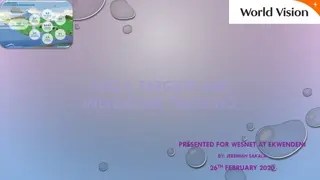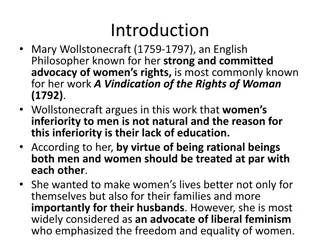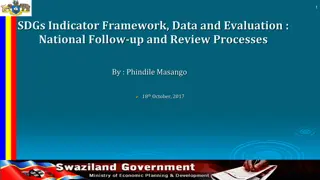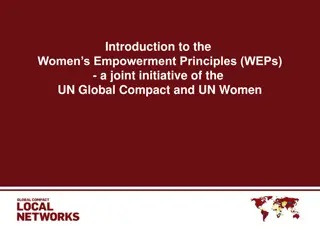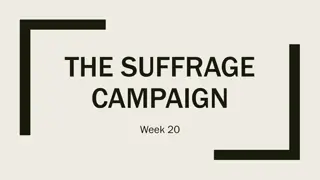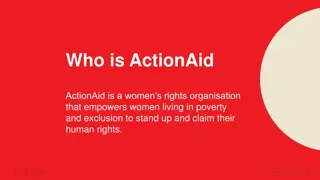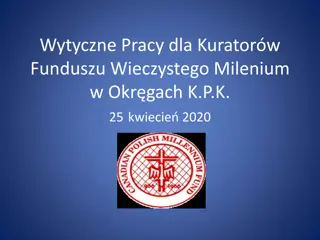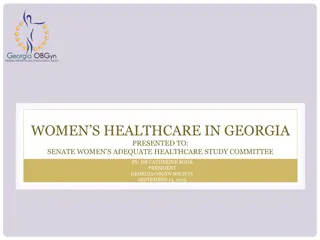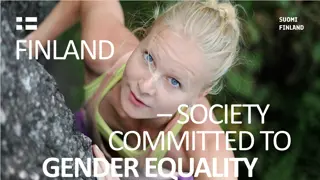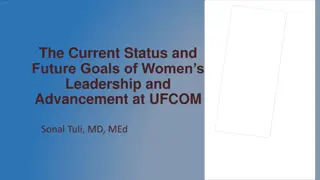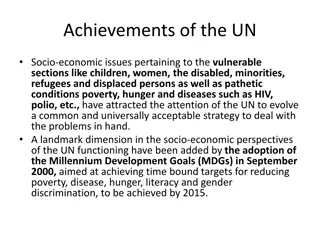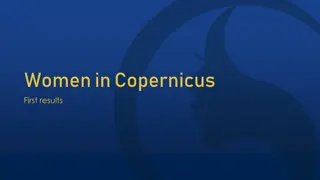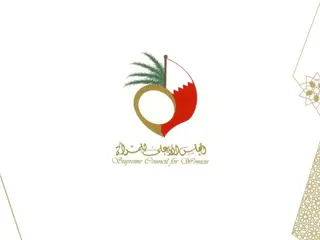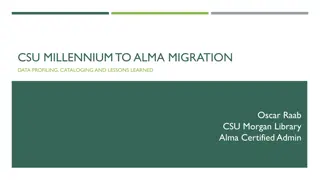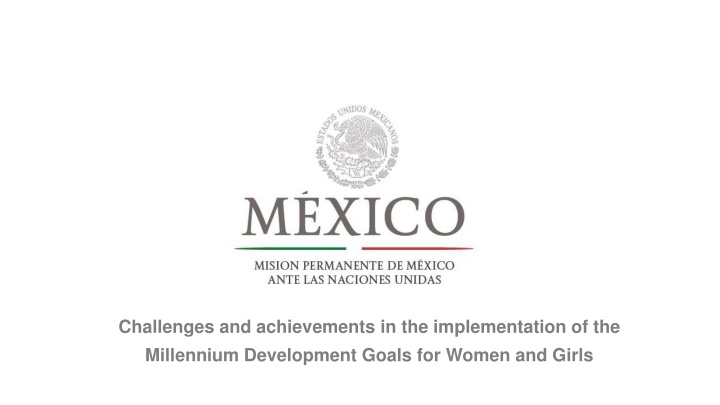
Challenges and Achievements in Millennium Development Goals for Women
Delve into the complexities of implementing the Millennium Development Goals specifically tailored for the advancement of women and girls. Explore the hurdles faced, along with notable accomplishments. Gain insights on the progress and setbacks in empowering women and girls, enhancing gender equality, and fostering sustainable development worldwide.
Uploaded on | 1 Views
Download Presentation

Please find below an Image/Link to download the presentation.
The content on the website is provided AS IS for your information and personal use only. It may not be sold, licensed, or shared on other websites without obtaining consent from the author. If you encounter any issues during the download, it is possible that the publisher has removed the file from their server.
You are allowed to download the files provided on this website for personal or commercial use, subject to the condition that they are used lawfully. All files are the property of their respective owners.
The content on the website is provided AS IS for your information and personal use only. It may not be sold, licensed, or shared on other websites without obtaining consent from the author.
E N D
Presentation Transcript
Challenges and achievements in the implementation of the Millennium Development Goals for Women and Girls
INTRODUCTION Mexico s commitment to achieve GEWE is carried out through the implementation of the National Development Plan 2013 -2018, which aims to mainstreaming gender at every governmental level, in order to close the gaps and eradicate barriers that cause exclusion, inequality and discrimination. Gender mainstreaming and other international commitments find the adequate means to strengthen in the international agenda and multilateralism.
ACHIEVEMENTS Extreme poverty - Addressed as a structural problem with differentiated impacts in women and men, was reduced in more than half, from 9.3% in 1989 to 3.7 in 2014. Since 2008 Mexico implemented a multidimensional measurement of poverty, that calculates this phenomena forma a human rights approach which allows to address it in a more effective way. Education - In 2014, it was reached universal coverage of primary schooling, which reduced disparity among girls and boys. Alphabetization rate of women between 15 and 24 years reached also 98%, its equivalent to men. Political participation - The proportion of seats occupied by women increased. At the Lower House: from 12.4% representation in 1988 to 42.4% in 2015, and at the Senate from 15.6% to 34% during the same reference years.
ACHIEVEMENTS Health access - Since 1992, prevalence of HIV/AIDS in our country declined, and in 2013 was only 0.23% of the population of 15-49 years, below the goal of maximum of 0.6% of that population group. Others transmitted diseases as the malaria also decreased significantly leaving as one of the main challenges the eradication of the tuberculosis. Sustainability of the environment - In this respect, we have reduced by a 0.27%, ozone-depleting substances; increased access to services of drinking water in a 90.9% and sanitation in a 87.7%; and decreased the prevalence of urban shanty from 35.7% to 17.1%. All of the above are fundamental factors in the empowerment and development of women and girls. Mexico reached the goals provided in 37 of 51 indicators, equivalent to 72.5% compliance.
CHALLENGES: FROM MDGSTO SDGS 1. Multidimensional poverty and women s participation 2010 2015 STAGNATIONININCOME INCRESE: School lag 21.9 18.7 43% LABOR MARKET Access to health services 27.1 14.7 58.8 55.0 Access to social security GOALSTO 2018: Quality housing 14.9 11.8 48% LABOR MARKET Access to basic housing services 22.6 20.2 -20% WAGE INEQUALITY Access to food 24.6 21.5
CHALLENGES: FROM MDGSTO SDGS 2. Maternal mortality MDG: 22.2 Result: 34.6 From 2014 to 2015 it was reduced 11% 1. Universal care of obstetric emergencies 2. Prevention and care of indirect causes of maternal death 3. Promotion of post-obstetric contraception 4. Strategy of prevention and intercultural care 5. Maternal Mortality Observatory in Mexico
NATIONAL CAPACITIES MDGs follow up allowed our country to develop national capacities and to create new mechanisms of coordination and evaluation, as well as pioneer systems of monitoring, nowadays considered as international models. Besides the impact of the MDGs they also triggered institutional changes, among others: I. Statistical Systems; II. Monitoring and Institutionalization; III. New Information Systems; and IV. Evaluation and Accountability
BESTPRACTICESON GENDER STATISTICS 17 years of fostering national and International Gender statistics. Specialized Committee of Information with Gender Perspective of the national System of Geographic and Statistical information. VaW Survey as National Interest Information.
MEXICOFACETO AGENDA 2030 Participation throughout the SDGs negotiation in line with our international commitments on human rights, reflected in its main components. One of its priorities was GEWE as crosscutting axis for development. Agreed position with Latin-American countries face to 58CSW, not as a only goal along all A2030 contents.
TRABAJOINSTITUCIONALALINEADOALASDIRECTRICES 1. Centralized coordination 2. High level coordination 3. Transparency 4. Local and all level participation 5. Budget allocation 6. International cooperation 7. NGO participation
LESSONSLEARNTFROM CIVIL SOCIETY Results a) Advances (partial and heterogenous) b) Human rights approach c) Gender mainstreaming d) Structural changes & sustainability e) Collateral damage of interventions
LESSONSLEARNTFROM CIVIL SOCIETY CS challenges a. Follow up MDGs i. Process interruptions ii. Resources mobilization b. Reassessment to SDGs i. Human rights commitments articulation ii. Long term address to promote sustainable changes c. CS and Government articulation i. Cooperation relations ii. Civil society contributions: technical approach, visibilization of specific needs and creation of indicators iii. Monitoring and entailment





